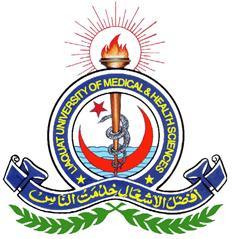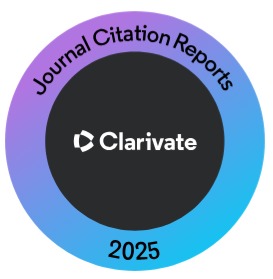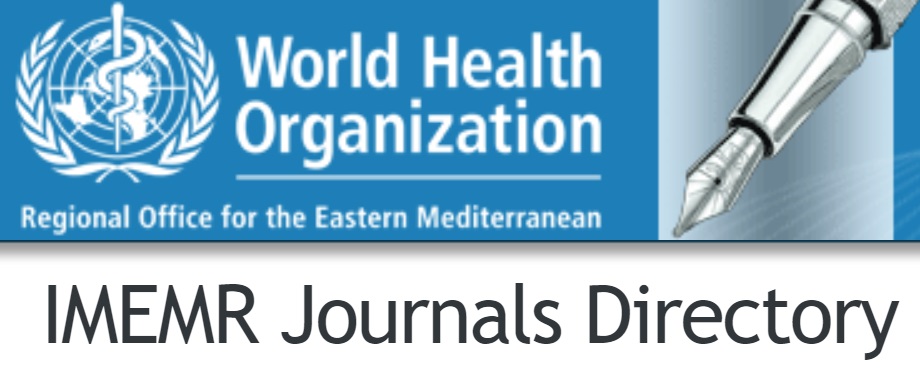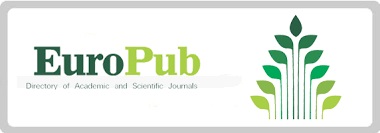Nursing Intervention Including Meditation and Physiotherapeutic Treatment in Post PCI Chest Pain (Non-Ischemic)
Keywords:
Percutaneous Coronary Intervention, Chest Pain, Numerical Rating Scale, Short McGill Pain QuestionnaireAbstract
OBJECTIVE: To determine the effectiveness of nursing educational interventions on patients with post PCI non-ischemic chest pain.
METHODOLOGY: This experimental study was conducted from December 2017 to May 2018 on 100 post PCI patients. Patients who came with post PCI non-ischemic chest pain and on initial screening on the Numerical Rating Scale (NRS) patients scored 5 to 10 were included. Those who had post PCI ischemic chest pain with complications were excluded from the study. The Short McGill Pain Questionnaire (SMPQ) was used to assess the effectiveness of nursing educational interventions. Data analysis was performed using SPSS version 26. Percentages were used for categorical variables, and inferential statistics were calculated using the Mann-Whitney Test. Median and range were calculated at baseline, week two, week four and week six for experimental and non-experimental groups. A P-value of <0.05 was considered significant.
RESULTS: This study showed that most participants (74%) were males, and almost all (99%) were married. The P-value is significant at different intervals between the experimental and control groups at two, four and six weeks with P-values <0.001, <0.001, and <0.001, respectively.
CONCLUSION: The findings of this study revealed that nursing interventions help to reduce post PCI non-ischemic chest pain levels. This study demonstrates that after nurse-led educational interventions, there were significant differences in scores between interventional and non-interventional groups at different levels after PCI.
References
Arnold SV, Morrow DA, Lei Y, Cohen DJ, Mahoney EM, Braunwald E et al. Economic impact of angina after an acute coronary syndrome: insights from the MERLIN-TIMI 36 trial. Circ Cardiovasc Qual Outcomes. 2009 Jul; 2(4): 344-53. doi: 10.1161/CIRCOUTCOMES. 108.829523. Epub 2009 Jun 2.
Hess CN, Kaltenbach LA, Doll JA, Cohen DJ, Peterson ED, Wang TY. Race and sex differences in Post–Myocardial infarction angina frequency and risk of 1-year unplanned rehospitalisation. Circulation. 2017 Feb 7; 135(6): 532-43. doi: 10.1161/CIRCULATIO NAHA.116.024406.
Boden WE, O'Rourke RA, Teo KK, Hartigan PM, Maron DJ, Kostuk WJ et al. Optimal medical therapy with or without PCI for stable coronary disease. N Engl J Med. 2007 Apr 12; 356(15): 1503-16. doi:10.1056/ NEJMoa070829.
Stergiopoulos K, Boden WE, Hartigan P, Möbius-Winkler S, Hambrecht R, Hueb W et al. Percutaneous coronary intervention outcomes in patients with stable obstructive coronary artery disease and myocardial ischemia: a collaborative meta-analysis of contemporary randomised clinical trials. JAMA Intern Med. 2014 Feb 1; 174(2): 232-40. doi:10.1001/ jamainternmed.2013.12855.
Task Force Members, Montalescot G, Sechtem U, Achenbach S, Andreotti F, Arden C et al. 2013 ESC guidelines on the management of stable coronary artery disease: the Task Force on the management of stable coronary artery disease of the European Society of Cardiology. Eur Heart J. 2013 Oct 7; 34(38): 2949-3003. doi: 10.1093/eurheartj/eht296.
Niccoli G, Montone RA, Lanza GA, Crea F. Angina after percutaneous coronary intervention: The need for precision medicine. Int J Cardiol. 2017 Dec 1; 248: 14-9. doi: 10.1016/j.ijcard.2017.07.105.
Ben-Yehuda O, Kazi DS, Bonafede M, Wade SW, Machacz SF, Stephens LA et al. Angina and associated healthcare costs following percutaneous coronary intervention: a real-world analysis from a multi-payer database. Catheter Cardiovasc Interv. 2016; 88: 1017-1024. doi: 10.1002/ccd.26365.
Spain DM, Bradess VA, Matero A, Tarter R. Sudden death due to coronary atherosclerotic heart disease. Age, smoking habits, and recent thrombi. JAMA. 1969 Feb 17; 207(7): 1347-1349. doi: 10.1001/jama.1969.03150200113018.
McGillion M, Arthur HM, Natarajan M, Cook A, Gunn E, Watt-Watson J et al. Nonischemic chest pain following successful percutaneous coronary intervention at a regional referral centre in southern Ontario. Can J Cardiol. 2012 Mar-Apr; 28(2): S60-9. doi: 10.1016/j.cjca.2011.10.017.
Chang CC, Chen YC, Ong ET, Chen WC, Chang CH, Chen KJ, Chiang CW. Chest pain after percutaneous coronary intervention in patients with stable angina. Clin Interv Aging. 2016; 11: 1123-1128. doi: 10.2147/CIA.S103605.
Yuan L, Yuan L. Effectiveness of nursing Intervention on anxiety, psychology and self-efficacy among elderly patients with acute coronary syndrome after percutaneous coronary intervention: An observational cohort study. Medicine (Baltimore). 2021 Aug 20; 100(33). doi: 10.1097/MD.0000000000026899.
Wong MS, Chair S.Y. Changes in health-related quality of life following percutaneous coronary intervention: a longitudinal study. Int J Nurs Stud. 2007 Nov 1; 44(8): 1334-42. doi: 10.1016/j.ijnurstu.2006.07.011. Epub 2006 Sep 18.
Su JJ, Yu DS. Effects of a nurse-led eHealth cardiac rehabilitation programme on health outcomes of patients with coronary heart disease: A randomised controlled trial. Int J Nurs Stud. 2021 Oct 1; 122: 104040. doi: 10.1016/j.ijnurstu.2021.104040.
He J, Dai F, Liao H, Fan J. Effect of individualised nursing intervention after percutaneous coronary intervention. Int J Clin Exp Med. 2019; 12(6): 7434-7441.
Lin C, Liu H, Liu X, Zhang Y, Wu F. The application of whole-course nursing in patients undergoing emergency PCI and its impact on cardiac function. Am J Transl Res. 2021; 13(7): 8323-8329. Published online 2021 Jul 15.
Rolley JX, Salamonson Y, Dennison CR, Davidson PM. Nursing care practices following a percutaneous coronary intervention: results of a survey of Australian and New Zealand cardiovascular nurses. J Cardiovasc Nurs. 2010 Jan 1; 25(1): 75-84. doi: 10.1097/JCN.0b0 13e3181bb419d.
Shim JL, Hwang SY. Long-term effects of nurse-led individualised education on middle-aged patients with acute coronary syndrome: a quasi-experimental study. BMC Nurs. 2017 Dec 16; 16: 59. doi: 10.1186/s12912-017-0254-y.
Valaker I, Norekvål TM, Råholm MB, Nordrehaug JE, Rotevatn S, Fridlund B, CONCARD Investigators. Continuity of care after percutaneous coronary intervention: The patient's perspective across secondary and primary care settings. Eur J Cardiovasc Nurs. 2017 Jun; 16(5): 444-52. doi: 10.1177/1474515117690298.
Zhu T, Liu H, Han A, Gu H, Li X. Orem's self-care to treat acute coronary syndrome after PCI helps improve rehabilitation efficacy and quality of life. Am J Transl Res. 2021; 13(4): 2752-2762. Published online 2021 Apr 15.
Wang Z, Wang Y, Song X. Comprehensive nursing care after coronary intervention operation. Food Sci Technol (Campinas). 2021 July-Sep; 41(3): 556-563. doi: 10.1590/fst. 10320.
Downloads
Published
How to Cite
Issue
Section
License
Copyright (c) 2023 Journal of Liaquat University of Medical & Health Sciences

This work is licensed under a Creative Commons Attribution-NonCommercial-ShareAlike 4.0 International License.
Submission of a manuscript to the journal implies that all authors have read and agreed to the content of the undertaking form or the Terms and Conditions.
When an article is accepted for publication, the author(s) retain the copyright and are required to grant the publisher the right of first publication and other non-exclusive publishing rights to JLUMHS.
Articles published in the Journal of Liaquat University of Medical & health sciences are open access articles under a Creative Commons Attribution-Noncommercial - Share Alike 4.0 License. This license permits use, distribution and reproduction in any medium; provided the original work is properly cited and initial publication in this journal. This is in accordance with the BOAI definition of open access. In addition to that users are allowed to remix, tweak and build upon the work non-commercially as long as appropriate credit is given and the new creations are licensed under the identical terms. Or, in certain cases it can be stated that all articles and content there in are published under creative commons license unless stated otherwise.























